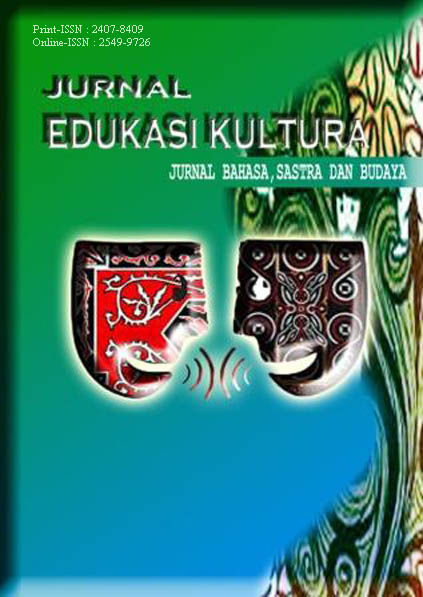Penerapan Pendekatan Deep Learning dalam Pembelajaran Matematika di Sekolah Dasar: Meningkatkan Pemahaman Konseptual Siswa
Keywords:
Deep Learning, Mathematics Learning, Conceptual Understanding, Artificial IntelligenceAbstract
This article examines the application of the deep learning approach in mathematics learning in elementary schools with the aim of improving students' contextual understanding. Through the literature method, this article analyzes various sources that are relevant to understanding how deep learning can be applied in the context of elementary education. Deep learning is defined as an approach that emphasizes critical understanding and application of knowledge. With the use of artificial intelligence technology, learning methods and approaches will continue to develop, allowing concepts that were previously only considered imagination or fiction to be realized. The Deep Learning approach seeks to transform the paradigm. Traditional learning tends to suppress memorization, and its adherents. Information, becomes more constructive and reflective learning. The results of the study show that deep learning can improve students' understanding of concepts in a deeper and more meaningful way.References
Biggs, J., & Tang, C. (2011). Teaching for Quality Learning at University. McGra
Effendi, M., & Wahidy, A. (2019). (Judul Buku atau Artikel jika diketahui). (Penerbit atau Jurnal jika diketahui).
El Banar: Jurnal Pendidikan dan Pengajaran. (2025). Penerapan Pendekatan Deep Learning Pada Pembelajaran di Sekolah Dasar Kota Bekasi. DOI:10.54125/elbanar.v8i1.539[8]
Hidayat, A. G., & Haryati, T. (2025). Analisis Efektivitas Pembelajaran Menggunakan Pendekatan Deep Learning pada Sekolah Dasar. Khazanah Pendidikan, 19(1).
Hidayati, R., & Sugiyanto, F.X. (2020). “Implementasi Pembelajaran Deep Learning untuk Meningkatkan Hasil Belajar Matematika Siswa.” Jurnal Pendidikan Matematika, 8(1), 12–21.
Marton, F., & Säljö, R. (1976). On Qualitative Differences in Learning: Outcome and Process. British Journal of Educational Psychology, 46, 4–11.
Marzano, R. J. (1998). A Theory-Based Meta-Analysis of Research onInstruction. Aurora, CO: Mid- continent Research for Education and Learning.
Nugraha, M. T., & Hasanah, A. (n.d.). Pendekatan Pembelajaran Deep Learning dalam Pendidikan Matematika. Jurnal Ilmiah Pendidikan.[9]
Nurul Mutmainnah. (2025). Implementasi Pendekatan Deep Learning Terhadap Pembelajaran Matematika di Sekolah Dasar. Pendas: Jurnal Ilmiah Pendidikan Dasar. DOI:10.23969/jp.v10i01.23781[1]
Sandy, R., et al. (2023). (Judul Buku atau Artikel jika diketahui). (Penerbit atau Jurnal jika diketahui)
Slameto. (2010). Belajar dan Faktor- Faktor yang Mempengaruhinya. Jakarta:Rineka Cipta.Studi Literatur Review tentang Pembelajaran Mendalam (Deep Learning) dalam Pendidikan Matematika. Jurnal Pendidikan FKIP Universitas Lampung.(2025)
Transformasi Pendidikan Dasar: Deep Learning sebagai Alat Pengajaran Inovatif. Universitas Negeri Surabaya (2025)
Published
How to Cite
Issue
Section
License
Copyright (c) 2025 Afrida Damai Yanti Siregar, Elvi Mailani, Nur Rarastika, Jessica Angelia Ndruru, Sri Ayuning Melati

This work is licensed under a Creative Commons Attribution 4.0 International License.

This work is licensed under a Creative Commons Attribution 4.0 International License
Authors who publish with this journal agree to the following terms:
- Authors retain copyright and grant the journal right of first publication with the work simultaneously licensed under Creative Commons Attribution 4.0 International License that allows others to share the work with an acknowledgement of the work's authorship and initial publication in this journal.
- Authors are able to enter into separate, additional contractual arrangements for the non-exclusive distribution of the journal's published version of the work (e.g., post it to an institutional repository or publish it in a book), with an acknowledgement of its initial publication in this journal.Penulis.
- Authors are permitted and encouraged to post their work online (e.g., in institutional repositories or on their website) prior to and during the submission process, as it can lead to productive exchanges, as well as earlier and greater citation of published work (Refer to The Effect of Open Access).



